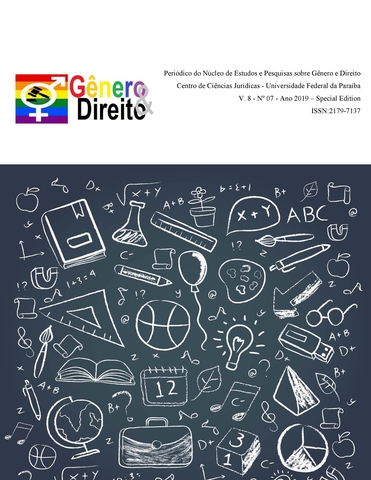SAGIT RAMIYEV’S DRAMATURGY IN LITERARY AND CULTURAL CONTEXT DURING THE BEGINNING OF THE XXTH CENTURY
DOI:
https://doi.org/10.22478/ufpb.2179-7137.2019v8n7.50004Palavras-chave:
Tatar literature, culture, literary relationships, drama, Sagit Ramiev.Resumo
The article analyzes the work by Sagit Ramiev, who created his own poetry school in the early twentieth century. The object of scientific analysis in this work is his plays (“Live, Zubeida, and I live”; “Exemplary Madrassah”). It is known that at the beginning of the twentieth century the Tatar people were undergoing socially spiritual and cultural renewal. The active development of the national periodical press, publishing, literary criticism has a positive effect on the creative activities of writer devoters during this period. The problem of the reconstruction of the Tatar society is raised in the works of Tatar literature classics and such famous personalities as G. Iskhaki, F. Amirkhan, G. Kulakhmetov, I. Bikkulov and others. Among the pressing problems raised in Tatar literature at the beginning of the twentieth century, the female problem occupies an important position. Writers and playwrights believe that without a positive solution of society attitude towards women and the women issue, they can't achieve the progress in Tatar society.These social and cultural conditions positively affect the formation of the ideological and aesthetic concept of S. Ramiev's works.The study subject of this article is the continuation of the traditions begun by the classics of Tatar literature in the field of topics and problems, in the system of images and literary methods, the identification of literary relationship types in the ideological content of S. Ramiev’s plays. Along with this, attention is paid to the traditions that provide a connection with the literary and historical periods of the national art of words, as well as to the identification of individual features in S. Ramiev’s works. The study of the playwright’s work in the context of the literary and cultural context of the early twentieth century makes the scientific novelty of this study.The methods and principles have been used in scientific searches to comment on literary phenomena and the literary process in close interconnection and development - the principle of historicism, cultural-historical, comparative-historical, and biographical principle.
Downloads
Referências
Friedrich, M. (1998). Gabdullach Tuqaj (1886-1913). Ein hochgelobter Poet im Dienst von tatarischer Nation und sowjetischem sozialismus. Wiesbaden, 340 p.
Ganieva, R. (2002). Tatar literature: traditions, interconnections. Kazan: Kazan University Press, 272 p.
Gilazov, T. S., Karabulatova, I. S., Sayfulina, F. S., Kurakova, C. M., & Talipova, G. M. (2015). Between the East and the West–Phenomenon of Tartar Literary Criticism in The Lingvo-Cultural Aspect. Mediterranean Journal of Social Sciences, 6(3 S2), 508.
Golikova G., Motigullina A., & Zamalieva L. (2017). Аrtistic functions of the folk concept of “Water” IN the works of russian and tatar writers of the latter half of the 20th century (Works by V. Astafiev anf G. Bashirov). Modern Journal of Language Teaching Methods, 7(5), 72-81.
Ibragimov, B., Yusupova, N., & Zakirzyanov, A. (2016). Ideological myth and archetypes in tatar poetry of years 1920-50s. Journal of Language and Literature, 228.
Ishaqi, G. (1998). Works: in 15 volumes: Vol. 1: Tales and short stories (1899-1908). [Volume compiler, the author of notes and comments L. Gaynanova; scientific rev. by M. Khasanov, R. Islamov]. Kazan: Tatar Publishing House, 399 p. (in Tatar language).
Mingazova, L., & Sulteev, R. (2014). Tatar and English Children's Folklore: Education in Folk Traditions. Western Folklore, 73(4), 410.
Mingazova, L.I., Yuldybaeva, G.V., & Kayumova, G. F. (2018). The Folk Epic-Tulyak and Susylu, - Zayatulyak and Hyuhylu: the History of Record and the. Astra Salvensis, Supplement, 2, 673-681.
Ramiev, S. (1980). At the dawn: Poems, short stories, plays, journalism [Introductory article, bibliography, notes and comments by S. Sadretdinov]. Kazan: Tatar Publishing House, 272 p. (in Tatar language).
Sadretdinov, S. (1973). Creativity of Sagit Ramiev. Kazan: Kazan University Press, 162 p. (in the Tatar language).

